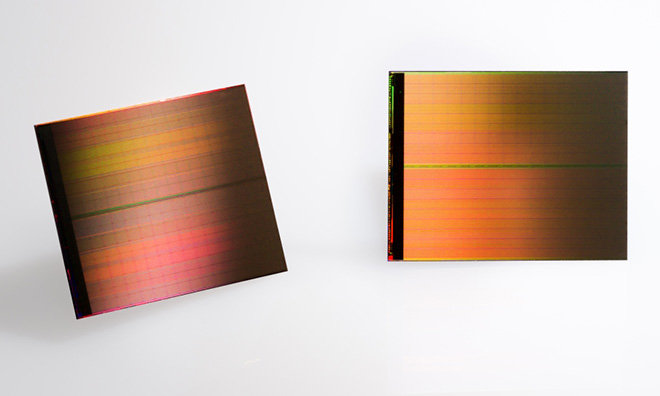Intel and Micron's new '3D XPoint' memory is 1000x faster, more durable than NAND
Semiconductor technology giants Intel and Micron on Tuesday announced 3D XPoint memory, the fruits of a joint endeavor into non-volatile memory technology the companies claim is the first major breakthrough in the space since the introduction of NAND flash in 1989.
On paper, 3D XPoint sounds like a cure-all for modern computer memory bottlenecks. The technology is said to be up to 1,000 times faster than NAND with up to 1,000 times greater endurance, while packing in 10 times the density of conventional DRAM components.
The culmination of more than a decade of research and development, 3D XPoint boasts what is described as a stackable, transistor-less "three-dimensional checkerboard" architecture in which memory cells can be addressed individually as they sit at the intersection of word and bit lines. This design allows the system to write and read data in smaller batches, which in turn facilitates faster and more efficient operation. And with low latency overhead, a single 3D XPoint module can serve both system and storage needs.
Perhaps most impressive is that 3D XPoint is not a one-off proof of concept, but is already in early stages of production.
"One of the most significant hurdles in modern computing is the time it takes the processor to reach data on long-term storage," said Mark Adams, president of Micron. "This new class of non-volatile memory is a revolutionary technology that allows for quick access to enormous data sets and enables entirely new applications."
Any number of computing applications can benefit from such fast and efficient technology. For example, 3D XPoint could accelerate machine learning systems, or enable medical researchers to study genetics and track diseases in realtime, the companies said.
Intel and Micron plan to release sample units to select hardware manufacturers later this year and plan to roll out independent product lines through 2016.
 AppleInsider Staff
AppleInsider Staff











 Malcolm Owen
Malcolm Owen
 William Gallagher and Mike Wuerthele
William Gallagher and Mike Wuerthele
 Christine McKee
Christine McKee
 William Gallagher
William Gallagher

 Marko Zivkovic
Marko Zivkovic









